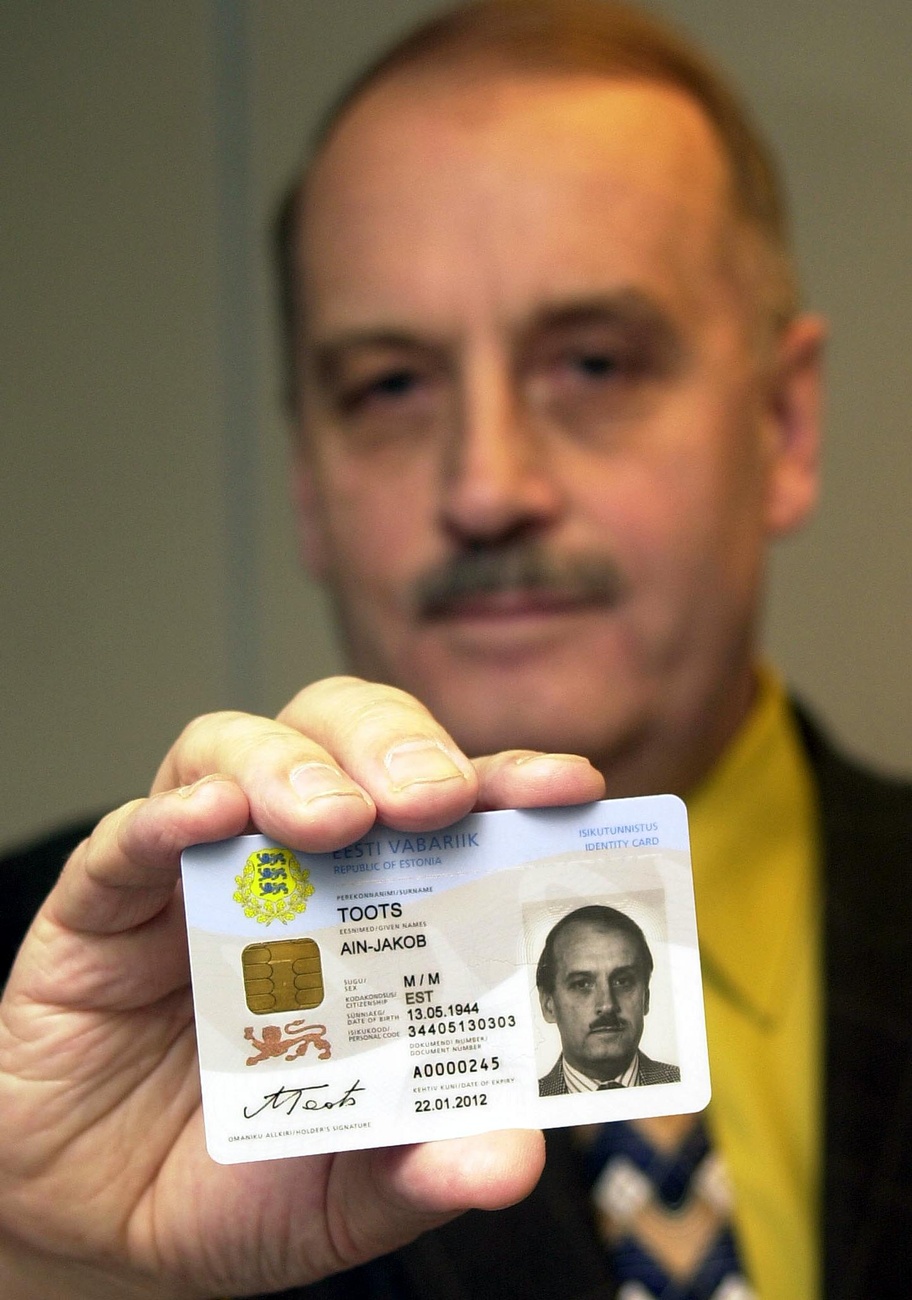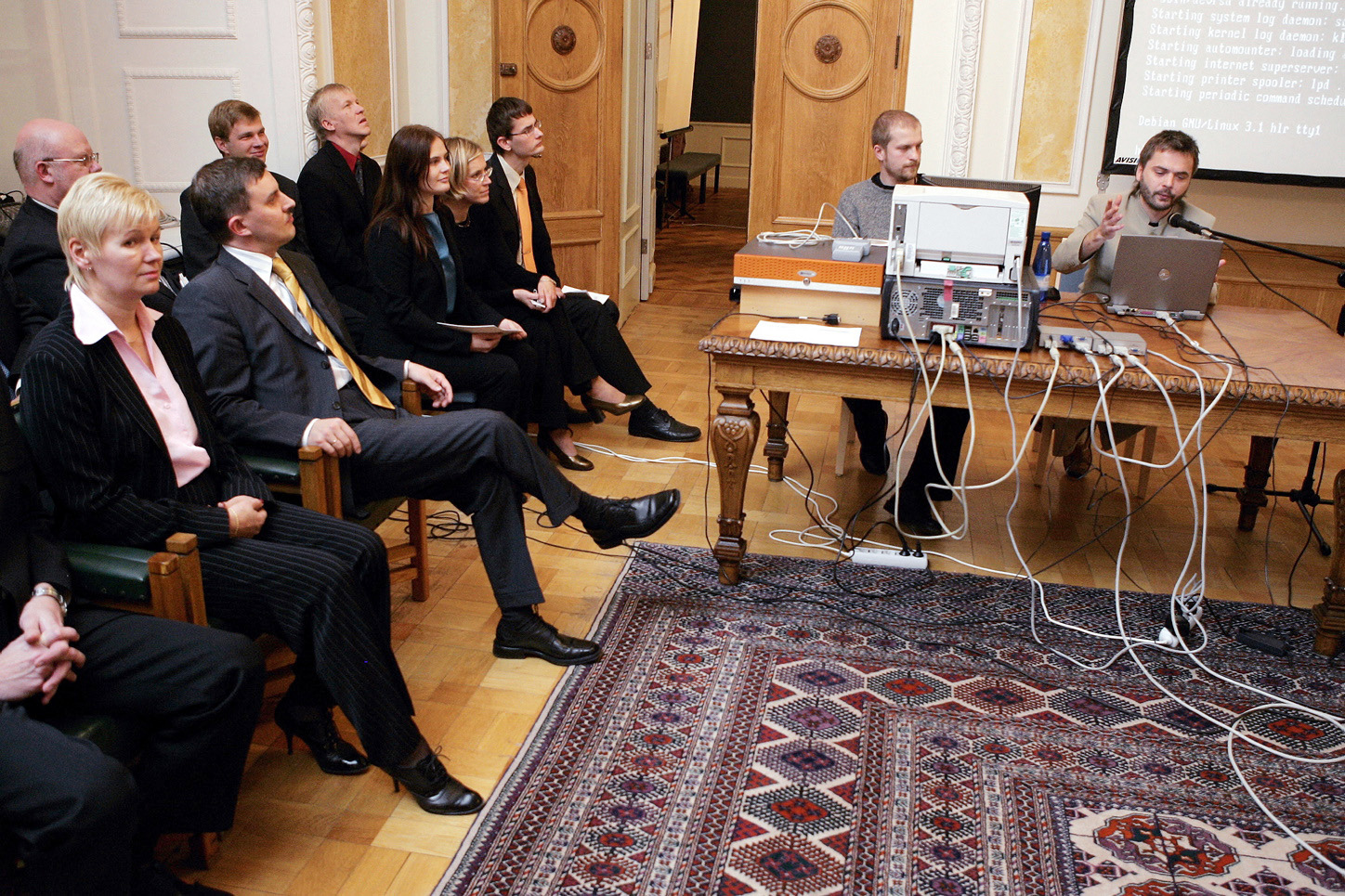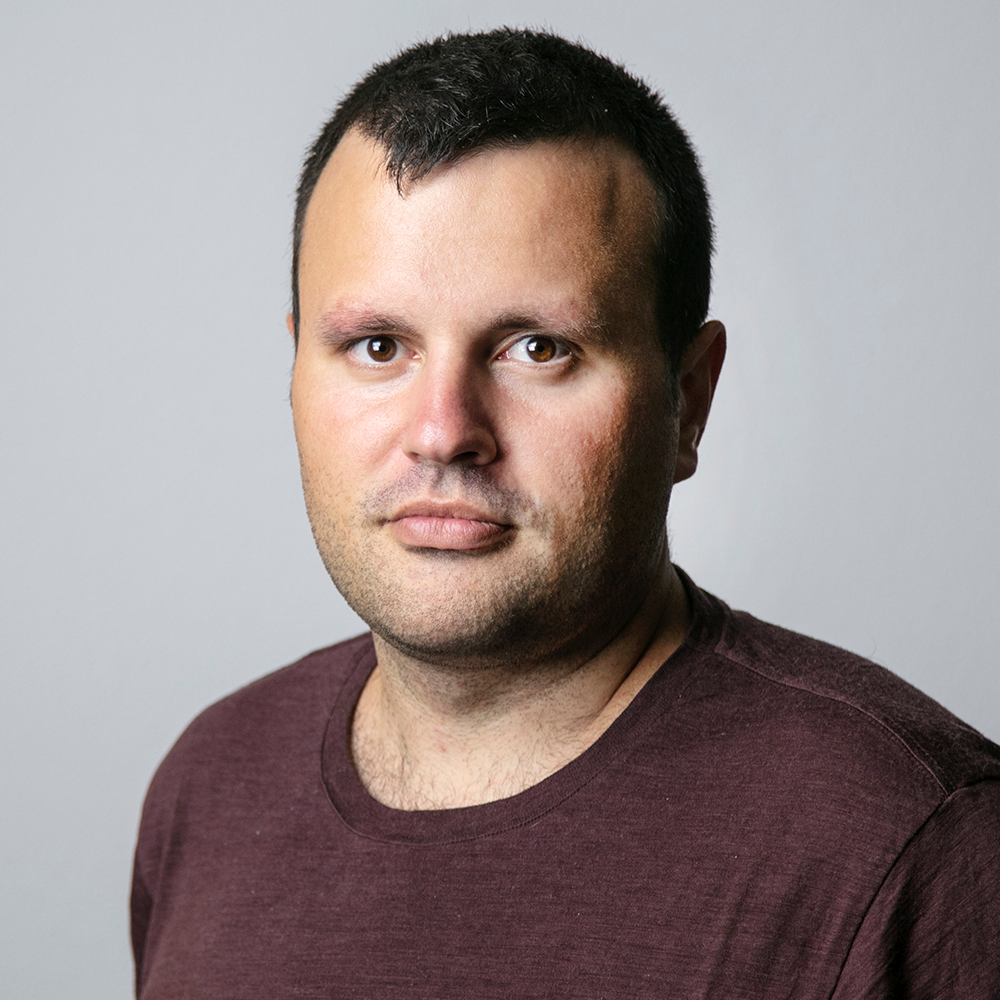
Why a slow-paced digital transition may be best for democracy

A recent monitoring report by the University of Basel concludes that a slow digital transformation, as in Switzerland, can help shield democracy from internal and external threats. At the other end of the spectrum, Estonia has been a trailblazer in the digital field. What are the lessons from these two very different experiences?
Switzerland is by no means considered a role model for its digital transformation. Many Swiss citizens were shocked, maybe even amused, to learn that doctors were sending their reports by fax to the Federal Office of Public Health at the start of the Covid-19 pandemic. Swiss daily the Neue Zürcher Zeitung lampooned this as the “running gag of the pandemic.”
A lot has changed since then. Nonetheless, the country has been somewhat ridiculed for its sluggish digital transformation in some fields. Some see this as a weakness of federalism and direct democracy: processes take time.
Already two years ago, the European Union’s eGovernment Benchmark 2023External link stated: “In many European countries, authentication with e-ID is almost as common as using your physical passport.” Estonia introduced an electronic identity system back in 2002. Switzerland will decide whether to introduce digital ID at the end of September.

More
‘It’s political’: why some people refuse to have a smartphone
But this heel-dragging could prove to be a plus. “Switzerland’s slow, decentralised digital transformation can protect democracy,” says Christian R. Ulbrich, co-director of the electronic Public Institutions and Administrations Research Forum (e-PIAF) at the University of Basel.
US throws new spotlight on issue
In the first half of this year, Tesla owner Elon Musk took on a special role within the US administration. He and his team at the Department of Government EfficiencyExternal link were tasked with identifying ways to reduce public spending. In so doing, they linked up existing government databases, with little heed for the sensitive nature of this initiative. Many citizens, as it turned out, had different expectations about how the state should handle their data.

All this has made people take greater note of the need to protect digital infrastructure, Ulbrich says – not just from external attacks, but also from malicious actors within.
‘Democracy-compatible digitalisation’ a must
“In many countries today, there are strong populist currents that don’t see the democratic system as something valuable, but rather as the enemy,” says Ulbrich. What if these populists came to power? “I believe one of the main tasks of the democratic system is to distribute power across many shoulders, so that too much authority does not rest in one place,” he says.
This conviction also shines through in the recent monitoring report, The Road to Automated DemocracyExternal link, produced by Ulbrich and his team. The first part of the study focuses on the “democracy-compatible digitalisation of the state”. It compares the digital transformation of public agencies, government, parliament and the judiciary in four liberal democracies: Switzerland, Germany the United Kingdom and Estonia.
Estonia was included in this selection as it is considered a model in the field: the post-Soviet state has digitalised 100% of its government services. The only-once principle applies. This means that citizens should only have to provide information to the authorities once. After that, all public bodies should be able to access the data. This is a far cry from what happens in Switzerland today.
Automatic number plate recognition in Estonia
The e-Estonia website promotes e-IDExternal link as the “cornerstone of a seamless digital society”. “We have built a digital society and we can show you how”, it announces. However, in the speedy digitalisation process, it appears that certain societal debates were skipped over – and now need to be made up for in retrospect.
For instance, the police, often working hand in hand with local authorities, set up a nationwide network of over 200 cameras that can automatically recognise car numbers. “However, a camera network on this scale […] was never publicly discussed in Estonia, neither in society nor at the level of the Riigikogu [the Estonian parliament]. Nor is such a system mentioned in any law,” wrote the Estonian public broadcasting platform ERRExternal link. The ensuing political furore, which has finally eased, led to instructions to the police to make only restrictive use of the data collectedExternal link.
In the report by Ulbrich and his team, Estonia received the best rating of the four countries. But there were significant points of criticism. Thus, the Estonian system can be used “for (anti-democratic) purposes with minimal intervention” and “to the detriment of the citizens”.

More
Are social scoring systems a threat to democracies?
Estonia clearly deserves “recognition”, Ulbrich says. The country was a forerunner and “built something truly amazing with the knowledge and technology available at the time.”
A system too easy to abuse?

But there are key weaknesses. How would he use the system if he had dubious intentions, Ulbrich wondered as he worked on the report: “Just how easy would it be?” He found a large, central registry in Estonia that contains a wealth of information about the population, including residential addresses and personal and family details. All the data is linked to a unique identification number that is “quasi-public”, as it contains the person’s date of birth. This identification number for every citizen is printed on all analogue ID cards. “All authorities have it, too, since it is the identifier for many things. This clearly begged the question: shouldn’t this be implemented in a better way today, to ensure greater protection against abuse?”
The backbone of Estonian digitalisation is X-Road, a software system that provides decentralised and secure data exchange via the internet. “Although X-Road is decentralised, it has two components – trust services and operators. And anyone who controls both controls the whole system.”
The Estonians are, of course, aware of the problem, Ulbrich adds, and almost all inquiries can be tracked in a data protection cockpit. “But when I look at the world mapExternal link and see who is buying the system, it is clear to me that authoritarian countries like Saudi ArabiaExternal link will certainly not integrate data protection.”
Tax authorities espouse new technologies
For a while Ulbrich worked as a management consultant at PricewaterhouseCoopers. This gave him insight into the workings of international tax authorities. What he saw happening in other countries was, he says, quite “crazy”. Take, for instance, the Mexican tax authority SAT, which has quietly set up one of the largest biometric databases in the world. Meanwhile the French, Spanish and Italian authorities are making use of satellite and drone images to detect undeclared swimming pools.
In general, Ulbrich says, new technologies are first taken up by the intelligence services and the police. Then they are adopted by the tax authorities – after which they spread to the rest of the public sector.
Russia spurs greater data protection awareness
Now in Estonia the anti-money laundering authority has come under fireExternal link. Did it have the right to request the bank details of thousands of peopleExternal link?
“The discourse has changed somewhat,” says Estonian political scientist Mihkel Solvak. Not so long ago, the professor at the University of Tartu explains, the country portrayed itself as a “digital wonderland”. However, some “high-profile cases of data theft” have raised the question of “whether we might not be sharing a little too much”. Musk’s data inquiries in the US have also resonated with the Estonian public, but the shadow of Russia, the “unfriendly neighbour to the east”, is greater. “This has spawned some opposition to the idea of creating new databases and linking existing ones with AI-supported searches,” the professor says.
And ever since it emerged that the state also used data to “a greater extent than was publicly known”, more critical voices have been calling for stricter monitoring and oversight, Solvak adds.
One approach, the Estonian academic continues, is to expand the X-Road data protection cockpit. “This has not been implemented across the board,” he explains. For a short time, it was possible to view all queries. “You could log into a government portal and see what data various government agencies and local authorities had viewed and what kind of information people clearly wanted to know.” At the time, the data protection cockpit was, he says, the “most used digital service” and studies have shown that it helps build trust.
Trust in technology a thorny issue
Trust, Solvak says, is absolutely central to the digital transformation of public infrastructure. “You have a piece of technology that is supposed to make other technology secure and thus create trust,” he says. In the past, there were paper receipts and documents. “Today, people can’t actually check the processes themselves.” This can lead to a chain, in which technology is introduced to monitor the security of other technology, which monitors the security of other technology, and so on.
The basic problem, however, remains: “I just have to believe that this piece of technology is working in my favour.”
Solvak can see no perfect remedy for this, but one thing can be done, he says: “Involve more players.”

Thus, online voting has been possible in Estonia for the past 20 years. “People don’t really understand how it works.” But if the election results were verified not just by one auditing agency but by multiple stakeholders – especially from different ideological backgrounds – this would increase public trust. “This is basically a change in procedure, rather than a new technology,” Solvak says, arguing it would not be difficult to introduce.
States must go digital or get left behind
The following point also emerges in Ulbrich’s monitoring report: some technological solutions are not recommended. The academic is critical of how in the UK “all branches of government […] migrated to Microsoft Cloud very early on”, thus placing themselves in the hands of a private provider. New technologies are not the best solution for a digital transformation that protects democracy, the research team found.
Thus, the report concludes, if courts host their data themselves this acts as a safeguard. And if in Switzerland data is distributed across municipal and cantonal authorities rather than stored in a central database, this also helps protect democracy. Digitalisation, according to the report, produces “a slight trend towards greater centralisation”, but on the whole Switzerland has “the greatest potential in terms of democracy-compatible digital transformation”. The state is slow, but rightly so, the report sums up. For, unlike private companies, it needs to win over the whole population. At the same time, Ulbrich warns, the state has no choice today: “If the rest of the world goes digital, the state must do so too – or get left behind.” This is why it is so important to give utmost thought to the process.
More
Edited by Samuel Jaberg. Adapted from German by Julia Bassam/gw

In compliance with the JTI standards
More: SWI swissinfo.ch certified by the Journalism Trust Initiative















![The four-metre-long painting "Sonntag der Bergbauern" [Sunday of the Mountain Farmers, 1923-24/26] had to be removed by a crane from the German Chancellery in Berlin for the exhibition in Bern.](https://www.swissinfo.ch/content/wp-content/uploads/sites/13/2025/12/01_Pressebild_KirchnerxKirchner.jpg?ver=6cb1bc31)















You can find an overview of ongoing debates with our journalists here . Please join us!
If you want to start a conversation about a topic raised in this article or want to report factual errors, email us at english@swissinfo.ch.